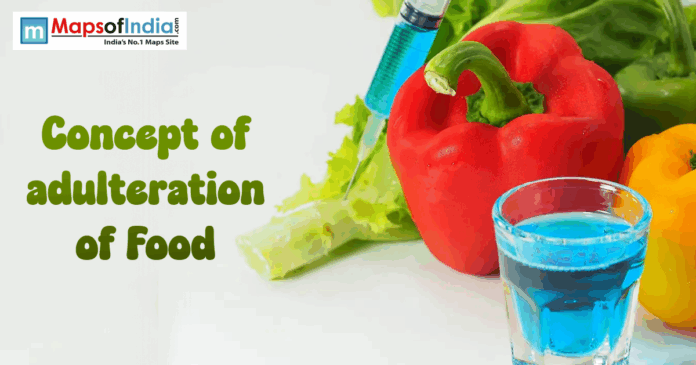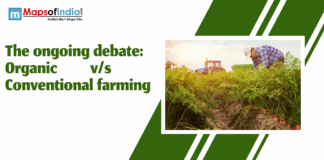Food adulteration is a hidden danger that everyone faces. This process involves adding harmful or inferior substances to food. The goal of doing so is often profit or deception. From spices to milk, no food is immune to this. You can find adulteration in any kind of food. Recently, it has become a global issue affecting health and trust. India also faces these challenges. There are many widespread cases happening around us. You can witness consumers’ outrage on social media. Adulteration undermines safety and nutrition.
What Is Food Adulteration
Food adulteration means compromising food quality by adding other substances to it. This includes adding cheap or harmful substances to good-quality stuff. Sometimes, it’s removing valuable ingredients. A FSSAI report defines it as intentional or accidental. Intentional adulteration is done to boost profits. Accidental cases happen because of poor handling. The everyday examples are like watered-down milk. Spices mixed with brick powder are another example. According to the WHO, this phenomenon is global. Adulteration deceives consumers of their rights. It violates food safety laws. Even small street-side vendors also adulterate. Understanding its nature is the first step. It’s a threat to health and trust.
Common Types of Adulteration
Adulteration happens in many ways. In this, like swapping costly ingredients with cheaper ones. Turmeric gets mixed with lead chromate to match its yellow properties. Dilution reduces the original quality of a product, like water in milk. Adding artificial colouring to products is also an example. In red chilli powder, we often find synthetic dyes. Spoilage masking hides stale food with chemicals. Edible oils may also be adulterated with toxic argemone oil. A Down to Earth article notes starch in ghee. Counterfeiting tries to copy branded products. These methods cut costs but harm health. Each type risks consumer safety.
Health Risks and Consequences
Adulterated food can cause serious harm to the human body. Products that contain chemical additives cause long-term harm. Many adulterated spices have lead in them, which can damage the kidneys. A Lancet report links it to neurological issues. In sweet products, Metanil yellow may cause cancer. Consuming diluted milk, which lacks nutrition, affects children’s health. Adulterated oils can cause heart issues. Consuming fake ingredients can also cause Allergic reactions. In the short term, effects like nausea or diarrhoea happen. Long-term risks involve organ damage. Adulteration affects our health silently. Awareness is critical for protection.
Economic and Social Impact
Adulteration also affects economies hard. It reduces trust in food markets, causing markets to collapse or lose money. A recent Economic Times report estimates India will lose $10 billion in revenue due to food adulteration. When cheap substitutes flood the market, farmers also lose money. Consumers pay for fake quality products, which will later affect their health. Small businesses face unfair competition from them. Socially, it sparks outrage. Food festivals lose foodies due to the safety fears. Rural vendors need to struggle to prove the authenticity of their products. Adulteration widens inequality. It exploits low-income consumers the most. Due to this, consumers also trust less in local brands and prefer well-established brands. This issue demands collective action.
Why Adulteration Happens
There are many reasons why adulteration in the food industry happens, but the main driving force behind this is Profit or monetary benefit. Adding cheap fillers like chalk to flour cuts costs. A FSSAI study blames weak supply chains. Unregulated markets allow fake products to surge. Lack of awareness about food safety is also one of the main reasons. Small vendors may not know the laws. The Hindu article also blamed lax enforcement. Corruption in inspections plays a significant role in the spread of food adulteration. Global demand for cheap food has fueled this thing. Adulteration thrives in informal markets, like on streets or in local shops. Many adulteration scams have been exposed, like spice rackets. But there are always more. Limited testing facilities have worsened the issue. Greed and weak systems made it possible to commit this crime.
Detection and Prevention Methods
Detecting adulteration is a tough task, but not impossible. There are many simple home remedies that can help. Milk with water floats differently in tests. A recent NDTV Food article shares a few tricks to purify turmeric. Drop it in water, impurities sink. Labs use spectrometry to get accuracy. FSSAI’s Food Safety on Wheels tests products by going on-site. According to a PIB report, there are more than 1000 mobile labs in India. Prevention of food adulteration needs stricter laws. Regular market checks deter culprits. A Business Standard article calls for blockchain tracking. Educating vendors about the effects of adulterated food on the human body reduces accidental cases. Consumers must stay vigilant. Technology and awareness are key.
Regulations and Global Efforts
India’s FSSAI has enforced many food safety laws. The Food Safety Act of 2006 sets standards for everything we know. Violators of this face fines up to Rs. 7 lakh. A 2025 FSSAI report noted 1200 convictions in a year. On a global level, the WHO’s Codex sets guidelines for food safety. A recent FAO article demands universal standards. Europe’s Rapid Alert System finds adulteration fast. India’s DART program is used to test for common adulterants. Global trade demands clean food. Stronger laws are needed to fight against adulteration. Enforcement must keep pace.
How Consumers Can Protect Themselves
In this case, consumers also hold power against food adulteration. Consumers can do things like buy products from trusted brands. Check FSSAI logos on packages before purchasing. Visit local markets for fresh produce. Avoid loose spices or oils. Doing simple tests at home helps. If you purchase milk regularly, buy Milk density kits, which are affordable. Report suspicious food to FSSAI helplines. You can share a complaint with them. Learn about how you can find common adulterants. Support certified organic products by purchasing from them. Demand transparency from vendors. Staying informed can lead to a healthy and long life. Consumers drive change through choices.
Conclusion
Food adulteration has become a serious issue. It has affected everything from milk to spices. There are many Health risks that range from nausea to cancer. Economically, this can cost billions and erode trust from some brands. Greed and weak systems made it sustain for this long. Detection methods like lab tests help. Stronger laws and global efforts are needed to fight back. Consumers can protect themselves with vigilance. Awareness and action are necessary. FSSAI’s efforts have made some progress. Choose trusted sources and test at home. Food safety starts with knowledge. Let’s demand pure, honest food.





